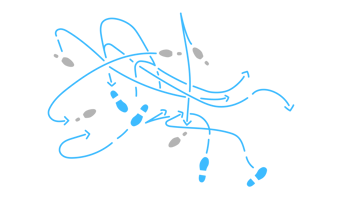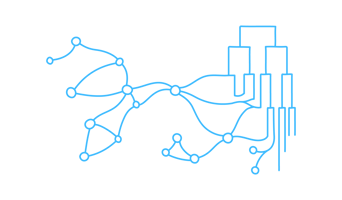Many challenges intrapreneurs face are organizational in nature and they require organizational work to overcome. In this sense, organizational agility can be an enabler for an intrapreneurial spirit and culture in established organizations.
Intrapreneurship – meaning the pursuit of entrepreneurial opportunities by corporate insiders who leverage organizational resources in alignment with the enterprise’s purpose – faces a set of unique challenges that, in part, go beyond the hurdles faced by entrepreneurs out in the “wild”. This is not to say that entrepreneurs have an easier task than those intrapreneurs working within the corporate office. But some of the challenges for corporate intrapreneurship are unique and they need to be taken into consideration when designing intrapreneurship programs. This post looks at one area of challenges in particular, namely organizational hurdles, and asks if increased organizational agility is a lever to make intrapreneurs more successful.
Challenges for successful intrapreneurship – beyond the lack of intrapreneurial skills
The specific challenges for successful intrapreneurship programs typically fall into three broad categories.
-
One set of challenges stems from a lack of strategic alignment and goals, such as: the day-to-day business eats the intrapreneurial innovation project for breakfast; the time horizon set for results to come in is unrealistically short; or innovative initiatives are seen as nice to have, but essentially irrelevant (especially shortly before the quarter’s end). The criteria used for selecting and funding initiatives lack strategic alignment. While every entrepreneur is well advised to have a sound strategy for their endeavor, the intrapreneurial challenge is more nuanced: the intrapreneur must have a strategy, yes, but this strategy must, above all, be supported by and aligned with a wider strategy for the entire enterprise.
-
A second set of challenges relates to people and skills. Again, whether you’re an investor or a senior manager, you would probably look for a similar set of characteristics in both intrapreneurs and entrepreneurs: energy and will, the talent to imagine and sell a future state that is not (yet) reality, leadership and team skills (in the broadest sense), an ability to learn and to pivot if the course needs to be changed, and a strong focus on execution. And yet, the intrapreneurial skill set would require additional skills: the capability to work within the organization, and the ability to command and maintain a broad internal network. Specific intrapreneurial skills have a lot to do with getting stuff done internally. Corporations often have tremendous resources at their disposal, but it’s far from certain that internal stakeholders will cheer about putting those resources at the service of intrapreneurial innovation.
-
This brings us to the third set of challenges, which are organizational in nature. These can include, for example: a middle management that slows down initiatives instead of promoting them; a lack of structures and processes for creating a safe space within the corporate jungle; the dominance of internal systemic logics that inhibit intrapreneurs from focusing on the customer; or an innovation culture that is hostile to intrapreneurs by insisting on formal processes and reporting, and ignoring anything outside the silo.
What do you need to do if you’re facing the third set of challenges? Would a more agile organization be the answer? At the end of the day, one key difference between an intrapreneur and an entrepreneur is that the former has to deal with an established organization, including all its rules, routines, structures, and processes. The intrapreneur doesn’t start on a greenfield. And that can both be an asset and a liability.
Allow intrapreneurial leadership to happen: Organizational agility can be an enabler for an intrapreneurial spirit and culture
One key common denominator of agile forms of organizing is a high level of individual and team autonomy based on a shared organizational structure and process framework. Self-management and self-organizing play a large role.
As a result, meddling by middle managers, lengthy chain-of-command decision processes, and the quality of the reporting relationship with one’s boss all become less important. There are fewer impediments to pursuing intrapreneurial opportunities. The very emergence of entrepreneurial ideas becomes more likely.
It makes sense that intrapreneurs in agile contexts have more autonomy and more responsibility. They are freer and, at the same time, they have to answer for their initiatives’ results. Intrapreneurs can – and they must – act more like the entrepreneurs who work outside the corporate office. The rules of the game change and so does the game itself.
Pushing organizational intrapreneurship by building an enterprising organization
The importance of intrapreneurship for strategic agility and the productive relationship between intrapreneurship and innovation is evident. However, in order to unleash the hidden entrepreneurial power within organizations, tone-from-the-top, while important, is not enough. And it’s not a matter of strategy and priorities alone. One key to successful intrapreneurship, we argue, lies in allowing & enabling both organizations and managers to be agile within a strong organizational framework.
Boost organizational innovation
with Management Kits
This blog post and another one on agile HR practices are based on a presentation given to an HR manager workshop organized by the BlueLion Incubator Zurich in August 2019. I am grateful to the BlueLion Foundation and Caroline Wiedemer in particular for the kind invitation and all participants for a very energetic and insightful discussion.



